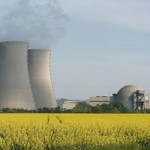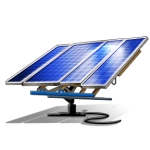Energy and the Environment
Energy is the power to “do work.” Anything that takes effort is work- and it always requires energy.
At home, you commonly use energy in several ways: 1. To heat things up. Cooking, keeping the house warm, heating the water for a shower.
1. To heat things up. Cooking, keeping the house warm, heating the water for a shower.
2. To cool things down. It takes energy to keep food cold in refrigerators, to make ice cubes, and to run an air conditioner.
3. To make light. Without energy, you’d be in the dark – literally. Whether it’s directly from the sun, from a battery in a flashlight, or from an electric outlet.
4. To do work. You use energy to run clothes washers and dryers, food mixers, lawn mowers, and automobiles, among other things.
As you can see, you use energy in everything you do.
Where Does Energy Come From?
The energy you use in your home, electricity, and natural gas, comes from natural resources, many of which developed over millions of years and are in limited supply.
The most common source of energy used in the United States are described below, along with some candidates for future energy sources.
Fossil Fuels
 ● It takes millions of years to create coal, oil, and natural gas. They are the remains of plants and animals that lived millions of years ago – about the same time as the plants and animals found in fossils.
● It takes millions of years to create coal, oil, and natural gas. They are the remains of plants and animals that lived millions of years ago – about the same time as the plants and animals found in fossils.
● At the rate the world is going, all fossil fuels will be burned up in a couple of centuries.
Oil
● Like coal, oil was formed from the remains of ancient jungles that were buried over centuries.
● Oil is the most widely used fuel in the United States and throughout the world.
Most of the oil burned to power cars, trucks, ships, and planes.
Coal
 ● Coal is a little like rock and a little like charcoal – hard, black, and slightly greasy.
● Coal is a little like rock and a little like charcoal – hard, black, and slightly greasy.
It’s found underground. Coal is burned in electric plants and factories.
In surface mines (also called strip mines), the soil and rock are peeled off with heavy machinery until the miners can get to the coal below.
Natural Gas
● This fuel is found underground, too. It’s called “natural” because when it comes out of the earth it’s already in gas form.
● Natural gas is used most often for cooking and heating.
Nuclear Power
 ● Nuclear energy comes from splitting atoms of uranium ore. The heat from splitting those atoms is used to turn water into steam and power electric generators.
● Nuclear energy comes from splitting atoms of uranium ore. The heat from splitting those atoms is used to turn water into steam and power electric generators.
Geothermal
● If you dug a deep well, you’d find that the earth around the well gets hotter the further you go down.
● In some places, water trickles down through cracks in the earth and eventually gets to rock so hot that the water boils into steam.
● This steam then rises out of the earth, gushing into geysers like Old Faithful in Yellowstone National Park. This kind of steam is used to turn generators and make electricity in several places around the world.
Solar
 ● Scientists have designed special panels that cover light energy (sun) into electric energy. You’ve probably had a toy, calculator, or a watch that uses “solar cells.”
● Scientists have designed special panels that cover light energy (sun) into electric energy. You’ve probably had a toy, calculator, or a watch that uses “solar cells.”
Wind
● Pioneers in America used windmills to pump their water out of wells. Now wind turbines are used to generate electricity.
● The wind spins the huge fan, (turbine blades), which in turn, run a generator that makes electricity.
Hydroelectricity
● It’s no mystery that water flows downhill.
● Today, the force of falling water is used to generate electricity. Dams across rivers trap the water and direct it to run through pipes down tens of stories or more to turn turbines that produce electricity.
Incentives-Policies for Renewables & Efficiency
A Promising Future
Looking into the future, engineers and scientists are confident that there will be other sources of energy. Two of the most popular are:
● Biomass: Biomass is organic matter that may be available on a renewable basis.
Today, biomass is used to fuel electrical power plants including plant fiber, animal waste, industrial waste, and solid waste.
● Ocean Tides: Since 1966, a commercial power plant in France has been generating electricity from the push and pull of the ocean tides. The world potential for tidal power is estimated to be 3,000 gigawatts.
Energy and the Environment
Using too much energy doesn’t just waste resources- it affects the health of our planet. When you conserve energy, you not only lower your energy cost, but also reduce the need for more power plants, preserve natural resources, and decrease pollution.
Air Pollution
 ● Whenever fuels like coal or gasoline are burned, chemical waste products are released into the air, even if you can’t see them.
● Whenever fuels like coal or gasoline are burned, chemical waste products are released into the air, even if you can’t see them.
● The chemical floats in the air above the city, where sunlight turns them into pollution. (smog) Today, more than half of all Americans live in places where the air is unhealthy at least a few days a year.
● The biggest source of smog is cars, trucks, factories, and electric power plants.
Acid Rain
● In some parts of the United States, there is as much acid in the rain as there is in lemon juice and vinegar.
● Car exhaust and the smoke from factories and many coal and oil plants contain invisible substances that turn into acid when they mix with moisture in the clouds.
The acid then falls to earth in rain or snow from those clouds.
● The two key pollutants in the formation of acid rain are sulfur dioxide and nitrogen dioxide.
● This contaminated rain and snow raise the acidity of lakes, streams, and forest floors. Many lakes in the Northeast are so polluted that no fish can live in them.
● You can further reduce the number of pollutants that form acid rain by driving less and using less electricity.
Water Pollution
 ● Our oceans, rivers, and bays are full of life. The plants and creatures that live there depend on clean water for life and health. You can do a better job of keeping the water clean and safe for them.
● Our oceans, rivers, and bays are full of life. The plants and creatures that live there depend on clean water for life and health. You can do a better job of keeping the water clean and safe for them.
● Power plants use water to generate energy and for cooling. When this water is returned to the environment, it can change the temperature, oxygen demand, sediment loading, and light penetration of natural bodies of water, such as lakes, rivers, bays, and oceans. If not effectively managed, such changes can harm many aquatic organisms and their habitats.
The Greenhouse Effect
Scientists believe that emissions of greenhouse gases caused by humans are changing the Earth’s climate.
● The air around us contains invisible gases. They help keep the Earth warm enough for us to live on it. Acting like windows, they let sunlight in and keep enough heat from escaping into space to sustain life on Earth. The main gas that does this is carbon dioxide (CO2). Another is methane-the main ingredient in natural gas.
Other gases that trap heat in the atmosphere (known as “greenhouse gases’) include nitrous oxide, hydro fluorocarbons (HFCs), perfluorocarbons (PFCs), and sulfur hexafluoride.
● By burning coal, oil, and gas, scientists tell us that people are putting more carbon dioxide and other greenhouse gases into the air, which traps more heat in the Earth’s atmosphere and oceans. This is called the “greenhouse effect.”
● Every time you flip off a light switch, turn down the heat, ride your bike,
or find an alternative to using a car, you’re helping the Earth.
Habitat Change
Whether the result of digging for coal, damming a river to produce hydroelectric power, or storing a nuclear power plant’s radioactive waste safely, the production of energy can have an impact on the surrounding natural habitat.
● Conserve energy preserve open spaces. Conserving energy means less
energy is needed. When you use less energy, less energy must be produced, and that can mean building fewer power plants. Fewer power plants leave land available for open space, parks, and wilderness areas that people and animals can enjoy.
● Support renewable energy creates a healthier environment. Air emissions associated with generating electricity from solar, geothermal, and wind technologies are negligible because no fuels are burned when energy is generated from these sources.
Information provided by The Earth●Works Group.

